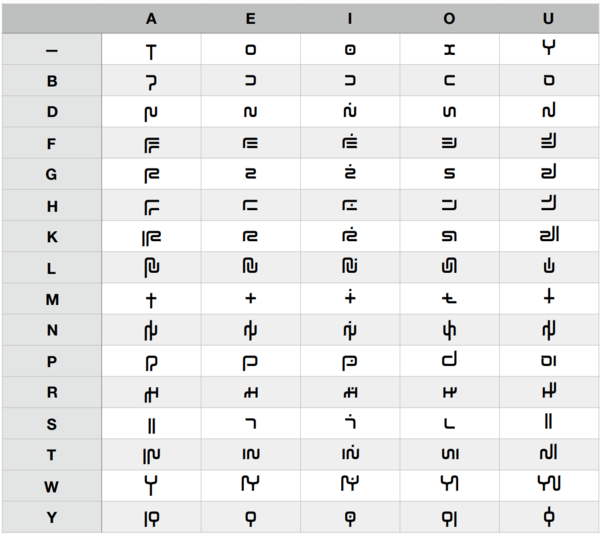Appendix:Dekuma orthography: Difference between revisions
m (Text replacement - "Decuma" to "Dekuma") |
m (Juelos moved page Appendix:Decuma orthography to Appendix:Dekuma orthography) |
(No difference)
| |
Revision as of 23:40, 26 July 2024
Dekuma is an asemic syllabary created by David J. Peterson and Claire Ng for the Netflix series Another Life.
Dekuma script
The Dekuma script is a syllabary characterized by single glyphs that undergo predictable modifications to represent various syllables. To illustrate this principle, take the example of a single consonant C, where the form remains identical to the Ce form. Consequently, the glyph ![]() can be read as [be] or simply [b]:
can be read as [be] or simply [b]:
In addition to these basic syllable glyphs, vowel glyphs appear in a raised form when they follow another vowel. These raised vowel glyphs are reduced in size:
When a word begins with a vowel, a separate vocalic glyph is used. The following table demonstrates the combinations of every consonant and vowel, including these stand-alone glyphs for initial vowels:
Numerals
The numerals of Dekuma are summarized in the following table:
Dekuma numerals are typically typed from left to right. Rather than relying on punctuation, a small space serves to separate hundreds from thousands and so forth:
Punctuation
Dekuma has only a limited set of punctuation marks. These marks can be applied between words, at the end of sentences, or at either end of sentences based on visual aesthetics:





